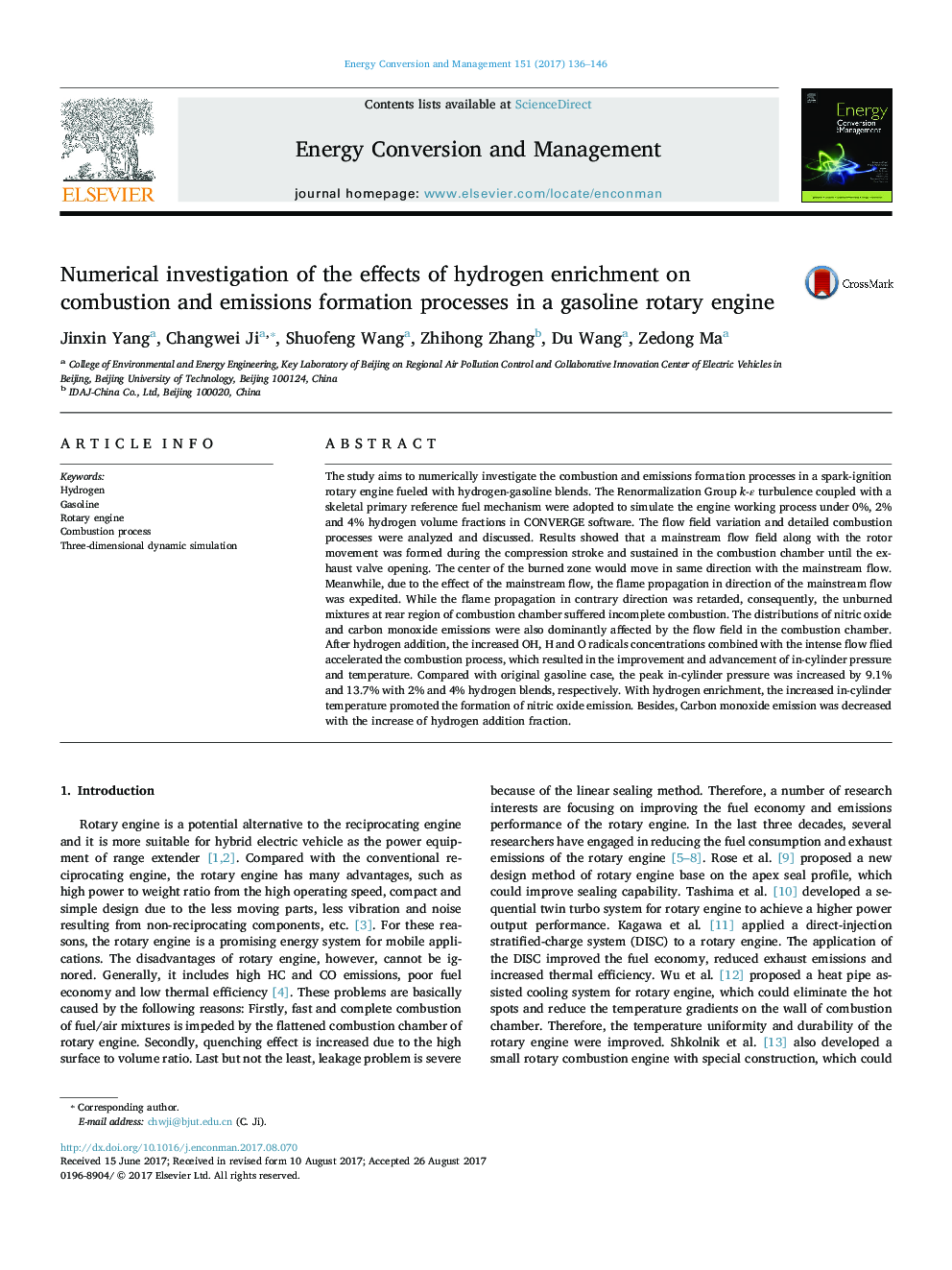| کد مقاله | کد نشریه | سال انتشار | مقاله انگلیسی | نسخه تمام متن |
|---|---|---|---|---|
| 5012368 | 1462811 | 2017 | 11 صفحه PDF | دانلود رایگان |
عنوان انگلیسی مقاله ISI
Numerical investigation of the effects of hydrogen enrichment on combustion and emissions formation processes in a gasoline rotary engine
ترجمه فارسی عنوان
بررسی عددی اثرات غنی سازی هیدروژن بر فرایند تشکیل احتراق و انتشار در یک موتور دوار بنزینی
دانلود مقاله + سفارش ترجمه
دانلود مقاله ISI انگلیسی
رایگان برای ایرانیان
کلمات کلیدی
هیدروژن، گازوئیل، موتور روتاری فرآیند احتراق شبیه سازی دینامیکی سه بعدی،
موضوعات مرتبط
مهندسی و علوم پایه
مهندسی انرژی
انرژی (عمومی)
چکیده انگلیسی
The study aims to numerically investigate the combustion and emissions formation processes in a spark-ignition rotary engine fueled with hydrogen-gasoline blends. The Renormalization Group k-ε turbulence coupled with a skeletal primary reference fuel mechanism were adopted to simulate the engine working process under 0%, 2% and 4% hydrogen volume fractions in CONVERGE software. The flow field variation and detailed combustion processes were analyzed and discussed. Results showed that a mainstream flow field along with the rotor movement was formed during the compression stroke and sustained in the combustion chamber until the exhaust valve opening. The center of the burned zone would move in same direction with the mainstream flow. Meanwhile, due to the effect of the mainstream flow, the flame propagation in direction of the mainstream flow was expedited. While the flame propagation in contrary direction was retarded, consequently, the unburned mixtures at rear region of combustion chamber suffered incomplete combustion. The distributions of nitric oxide and carbon monoxide emissions were also dominantly affected by the flow field in the combustion chamber. After hydrogen addition, the increased OH, H and O radicals concentrations combined with the intense flow flied accelerated the combustion process, which resulted in the improvement and advancement of in-cylinder pressure and temperature. Compared with original gasoline case, the peak in-cylinder pressure was increased by 9.1% and 13.7% with 2% and 4% hydrogen blends, respectively. With hydrogen enrichment, the increased in-cylinder temperature promoted the formation of nitric oxide emission. Besides, Carbon monoxide emission was decreased with the increase of hydrogen addition fraction.
ناشر
Database: Elsevier - ScienceDirect (ساینس دایرکت)
Journal: Energy Conversion and Management - Volume 151, 1 November 2017, Pages 136-146
Journal: Energy Conversion and Management - Volume 151, 1 November 2017, Pages 136-146
نویسندگان
Jinxin Yang, Changwei Ji, Shuofeng Wang, Zhihong Zhang, Du Wang, Zedong Ma,
